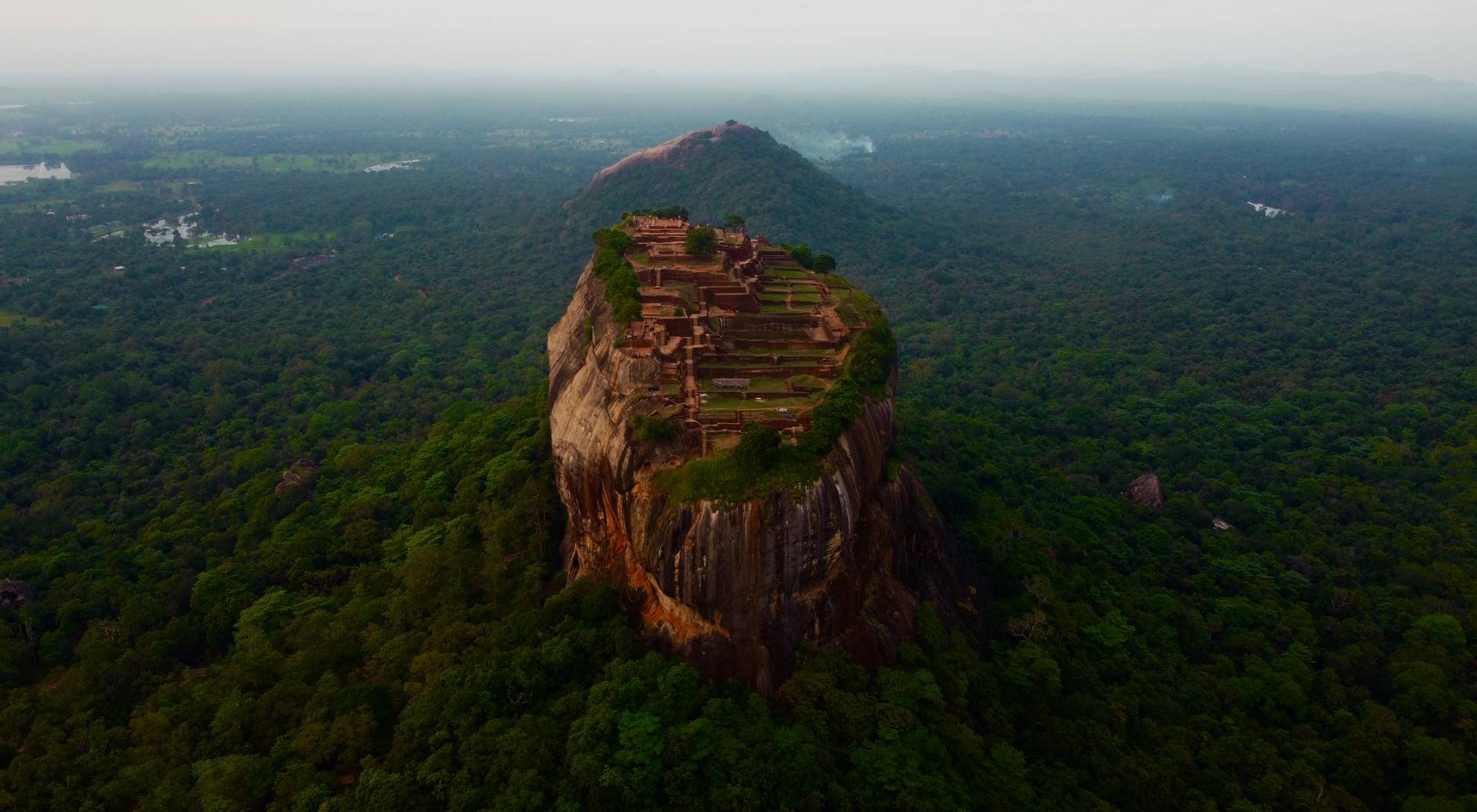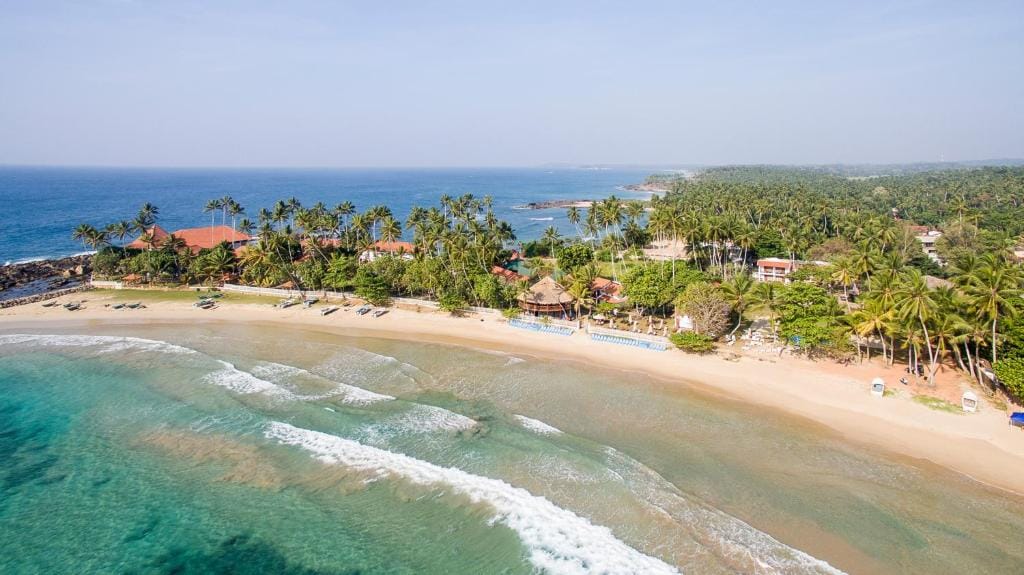Anuradhapura: Sri Lanka’s Eternal Sacred City
Anuradhapura was Sri Lanka's first capital and a flourishing hub of Buddhist politics, culture, and civilization.

Explore a city where time has stopped. The air hums with a quiet reverence that spans more than two millennia, monks drift between bodhi trees in flowing saffron robes, and ancient stupas rise from the ground like silent giants in Anuradhapura. In addition to being one of Sri Lanka's oldest cities, this one is also among its holiest, most legendary, and most spiritually vibrant.
A Glimpse Into History
Anuradhapura was Sri Lanka's first capital and a flourishing hub of Buddhist politics, culture, and civilization. It was founded in the fourth century BCE. King Pandukabhaya established the framework for a planned city with reservoirs, marketplaces, and administrative hubs, according to the Mahavamsa. ( the most sought literal source for Sri Lankan history). When Arahat Mahinda, the son of India's Emperor Ashoka, presented King Devanampiyatissa with the Buddha's teachings in the third century BCE, Anuradhapura became the birthplace of Theravāda Buddhism in Sri Lanka. The sacred Bodhi tree sapling from India was planted in the royal park, temples were constructed, and monks were ordained as a result of this milestone meeting.
Anuradhapura prospered under a series of Sinhalese kings for more than a millennium. It was one of the most developed cities in antiquity, with expansive monasteries, monumental stupas, and sophisticated irrigation systems. Long-lasting legacies were left by monarchs like Dutugemunu, Valagamba, and Mahasena, who promoted Buddhist scholarship and constructed architectural wonders.
Following several invasions from South India, particularly during the Chola occupation in the tenth century, the city's prominence started to fade. The capital was relocated to Polonnaruwa by the eleventh century, but Anuradhapura continued to be an important religious center, and its influence can still be seen today.
Sacred Highlights to Explore
Jaya Sri Maha Bodhi
Grown from a branch of the original Bodhi tree in Bodhgaya, India, this tree is the oldest in the world with historical documentation. For more than 2,300 years, it has been consistently revered as the city's spiritual center.
Ruwanwelisaya
This stunning white stupa, one of the most revered in the nation, was constructed by King Dutugemunu. Both artistic accomplishment and religious devotion are symbolized by its enormous dome and exquisite stone carvings. This site is also famous for its mystique powers, with the pinnacle of the stupa being aimed at Orion and Leo constellations.
Jetavanaramaya
Jetavanaramaya, once the world's tallest stupa, is a testament to the engineering prowess of the ancient world. There are more than 90 million bricks in it alone.
Abhayagiri Monastery
Thousands of monks used to live in this expansive monastery complex. It also symbolizes an alternative early Buddhist educational institution that was rich in philosophical discussion and cross-cultural interaction.
Twin Ponds (Kuttam Pokuna)
Two exquisitely crafted historic bathing tanks constructed for Buddhist monks are known as the Kuttam Pokuna (Twin Ponds) in Anuradhapura. They exhibit sophisticated water engineering and exquisite stone architecture, and date to approximately the eighth century. The intricacy of Sri Lanka's historic hydraulic systems is demonstrated by their symmetry and functionality.
Isurumuniya Temple
Anuradhapura's Isurumuniya rock temple is well-known for its "Isurumuniya Lovers" carving, a classic piece of ancient Sri Lankan art that shows a royal couple in a romantic pose. The temple, which was first constructed by King Devanampiya Tissa and subsequently improved by other kings, is thought to have originated in the third century BCE. Along with depicting both religious and secular facets of ancient Sinhalese culture, the site also includes exquisitely carved elephants bathing and regal figures.
Tissa Wewa & Nuwara Wewa
These massive man-made lakes are early examples of sustainable water management; they were once reservoirs (wewas) that sustained daily life and agriculture. Both these water bodies are the life lines of paddy farmers in the region.
Mihintale
The birthplace of Buddhism in Sri Lanka, Mihintale, is only 13 km from Anuradhapura. Here, Arahat Mahinda introduced the teachings of the Buddha to King Devanampiyatissa. With its ancient steps, stupas, and shrines, Mihintale is now a revered mountain that provides expansive views of the surrounding landscape. Reaching the summit at dawn or dusk is a sight to behold and a really spiritual experience.
Best Time to Visit
The dry season, which runs from May to September, is the ideal time of year to visit Anuradhapura because of the sunny weather, which is perfect for touring the ancient temples and ruins. Poson Poya, a major Buddhist festival that fills the city with pilgrims and glowing lanterns, makes June particularly noteworthy. Travelers should steer clear of October through January because plans may be disrupted by the northeast monsoon's heavy rains.
Tips for Visitors
- Dress appropriately (wear light coloured clothing that cover shoulders and knees)
- Remove headgear and footwear before entering temples.
- Drink plenty of water and use sunscreen. It could get very humid.
- Use a local guide to understand what the city means to the locals.
- Ethical photography at all times
If you're up for a full-day adventure, you can explore Anuradhapura on foot, by bicycle, or by tuk-tuk. Plan your itinerary or divide your visit into two days because the archaeological area is quite large.
More Than Ruins
Anuradhapura is vibrant with worship, community, and tradition; it is not a city stuck in a bygone era. Monks continue to meditate under old trees. Temple courtyards are still filled with ringing bells. Additionally, it continues to be a place of peace, pride, and pilgrimage for Sri Lankans.
From the beginnings of Sri Lankan kingship to Buddhist artistic expression and sophisticated hydraulic engineering, this holy city serves as a backdrop for further investigation. Stories of devotion, ingenuity, and timeless grace are whispered by each stone, carving, and statue in this place.





